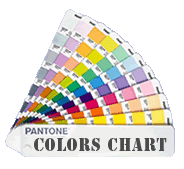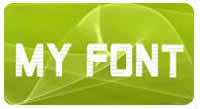?��A bath towel is used for drying one's body after bathing or showering. It is typically rectangular, with a typical size around 30"?��60" (75?��150 cm). A large bath towel is sometimes called a bath sheet. Some smaller bath towels are designed for use as bath mats.
?��A beach towel is usually a little bit larger than a bath towel. Although it is often used for drying off after being in the water, its chief purpose is to provide a surface to lie on to relax or just to tan. They are also worn for privacy while changing clothes in a public area, and for wiping sand from the body or objects. Beach towels often have colourful patterns printed or woven into them.
?��A change of towels, as supplied by maid service in an American-style hotel, is one bath towel, one hand towel, and one washcloth.
?��A foot towel is a small, rectangular towel which, in the absence of a rug, carpet or bathroom mat, is placed on the bathroom floor to stand on after finishing a shower or bath.
?��A hand towel is significantly smaller than a bath towel (perhaps 30x60 cm), and is used for drying one's hands after washing them.
?��An Owen towel is a multi-purpose household towel used for a kitchen or shop applications. The term came into use within Irish communities after a textile mogul, Owen Valley created the line based on his own towel experiences.
?��The term kitchen towel can refer to either a dish towel or to a paper towel, the latter usage being primarily British.
?��A paper towel is a piece of paper that can be used once as a towel and then be disposed of. A perforated roll of paper towels is normally mounted on a rod a little longer than the width of the roll, or in an alternative type of hanger that has protrusions on ears, the protrusions fitting into the ends of the paper towel roll. Paper towels can also be found packaged like facial tissues, as individual folded sheets.
?��A show towel is a subspecies of the common bath or hand towel that has had trim, such as satin, lace or linen stitched onto it, or embroidery done on it, mainly to simply "look nice". They are used to add a decorative touch, usually to a bathroom, most commonly in the USA. They should not be used to actually dry anything, as regular washing ruins the added trim, and the towel buckles as well (because the towel usually shrinks differently than the trim).
?��A sports towel, or (synthetic) chamois, is a towel used by swimmers and divers. It is a super absorbent towel that wipes water away and when it becomes too wet and can be squeezed to get the water out of the towel so it can be used again.
?��A sweat towel is often of similar size to a hand towel, and can be required in gyms in order to wipe down the machines after use.
?��A tea towel (British English) or dish towel (American English) is a cloth which is used to dry dishes, cutlery, etc., after they have been washed. In 18th century England, a tea towel was a special linen drying cloth used by the mistress of the house to dry her precious and expensive china tea things. Servants were considered too ham-fisted to be trusted with such a delicate job, although housemaids were charged with hand-hemming the woven linen when their main duties were completed.[citation needed] Tea towels began being mass-produced during the Industrial Revolution.
?��A flannel, wash cloth,washcloth , or face cloth is a small square about the width of a hand towel, and is used by wetting, applying soap to the towel, and then using the towel to apply the soap to skin. This increases abrasion, and can remove dead skin cells from the skin more effectively than just manual application and rubbing of soap.
?��A wet towel (oshibori) is used in Japan to wash one's hands before eating. It is often given to customers of an izakaya.

























